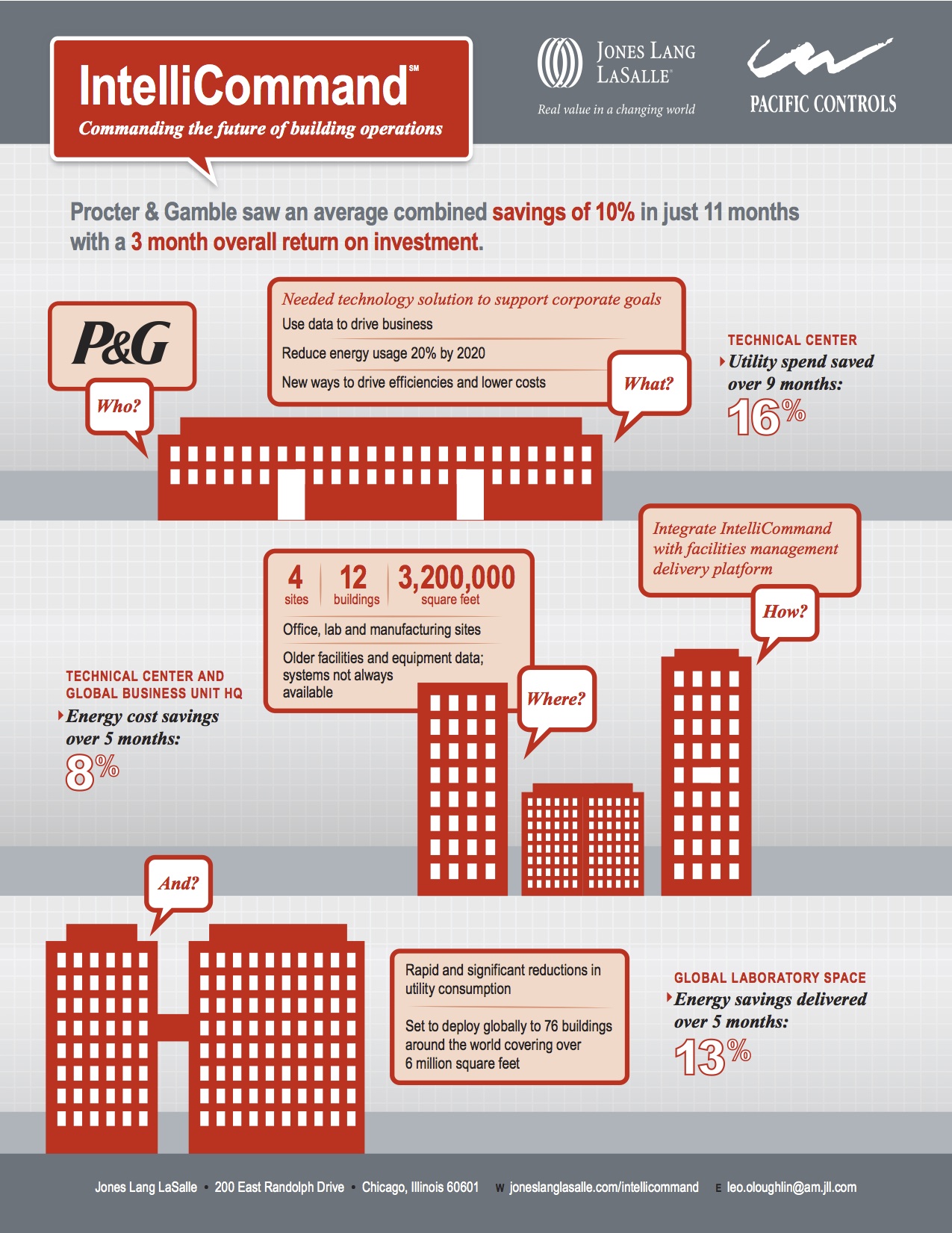Embedding resilience into building solutions is the theme at the BUILDINGChicago/Greening the Heartland expo and conference, September 9-11 at the Holiday Inn Chicago Mart Plaza. From regional success stories to emerging technology presentations, the 70+ continuing education sessions will explore the various ways that sustainable construction and design adds value to the built environment.
One not-to-miss presentation, on Monday, September 9 from 1:30-2:30 p.m., will feature Procter & Gamble’s smart building management program. The premise of this "Smart Buildings and Sustainability" presentation is that smart building technology can lead to energy reductions of 15 to 20 percent—even in already-efficient buildings—through continual commissioning and identification of equipment malfunctions that would not otherwise be detected by building engineers.
How so? Recent advancements in technology are allowing owners to connect with facilities as never before, leveraging existing automation systems to achieve cost-effective energy improvements. Just as smart buildings are getting smarter, so is the ability to manage them by using real-time data to drive more informed decision-making and execution. Technology solutions that were once cost-prohibitive have now become affordable and are driving measurable returns. Utilities are investing in smart grid technology that will further enhance the value of smart building systems.
Using P&G’s IntelliCommand case study, this presentation will provide examples of how building data analytics enabled facilities managers to quickly find and address energy usage anomalies, saving more than the cost of implementation in the first year, and paving the way for LEED certification.
In terms of resilience, smart building technology delivers—with cost efficiency, business risk management tools, increased operational effectiveness and improved ability to meet environmental goals. For more information, register for the conference, or download the P&G case study.
Related Stories
| Feb 14, 2014
Must see: Developer stacks shipping containers atop grain silos to create student housing tower
Mill Junction will house up to 370 students and is supported by 50-year-old grain silos.
| Feb 14, 2014
The Technology Report 2014: Top tech tools and trends for AEC professionals
In this special five-part report, Building Design+Construction explores how Building Teams throughout the world are utilizing advanced robotics, 3D printers, drones, data-driven design, and breakthroughs in building information modeling to gain efficiencies and create better buildings.
| Feb 14, 2014
Crowdsourced Placemaking: How people will help shape architecture
The rise of mobile devices and social media, coupled with the use of advanced survey tools and interactive mapping apps, has created a powerful conduit through which Building Teams can capture real-time data on the public. For the first time, the masses can have a real say in how the built environment around them is formed—that is, if Building Teams are willing to listen.
| Feb 13, 2014
University officials sound off on net zero energy buildings
As part of its ongoing ZNE buildings research project, Sasaki Associates, in collaboration with Buro Happold, surveyed some 500 campus designers and representatives on the top challenges and opportunities for achieving net-zero energy performance on university and college campuses.
| Feb 13, 2014
3 keys to designing freestanding emergency departments
Having physically disassociated from a central hospital, FEDs must overcome the particular challenges associated with a satellite location, namely a lack of awareness, appeal, and credibility. Gresham, Smith & Partners' Kristin Herman-Druc offers three keys to success.
| Feb 13, 2014
Why you should start with a builder
They say the best way to eat an elephant is one bite at a time. Expanding your building or constructing a new structure for your business, church, or school isn’t all that different. Attacking it is best done in small, deliberate pieces.
| Feb 13, 2014
Related Companies, LargaVista partner to develop mixed-use tower in SoHo
The site is located at the gateway to the booming SoHo retail market, where Class A office space is scarce yet highly in demand.
| Feb 12, 2014
First Look: Futuristic Silicon Valley campus designed to draw tech startups
The curved campus will consist of four different buildings, one exclusively for amenities like a coffee bar, bike shop, and bank.
| Feb 12, 2014
IIT's College of Architecture launches the Mies Crown Hall Americas Prize
Awarded biennially with a $50,000 prize, the program will recognize the most distinguished architectural works built on the North and South American continents in the preceding two years.
| Feb 11, 2014
Adobe Photoshop update features new 3D printing capabilities
Available as part of an update to Photoshop Creative Cloud, the tool enables users to easily and reliably build, refine, preview, prepare, and print 3D designs.


















